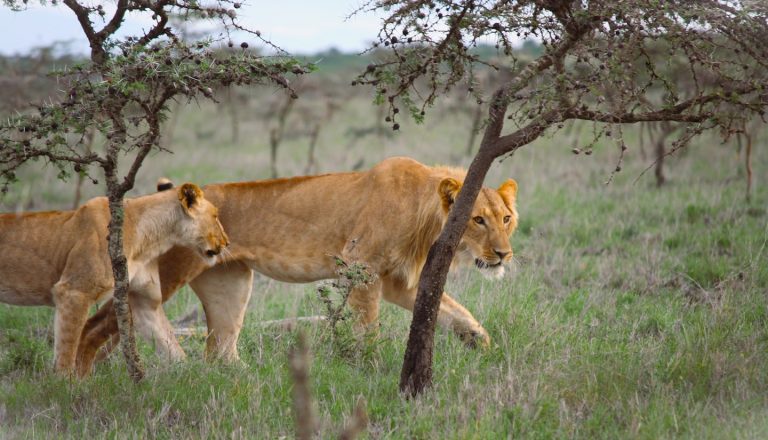As the acacia ants dwindled, the elephants were able to tear down and eat more of the thorny, hyacinth trees. With the decline in tree numbers, lions have lost the cover they rely on to stealthily attack zebras, their primary prey.
The study, published January 25 in the journal Science, found that lions are less likely to kill zebras in open areas. They killed 25 percent fewer zebras between 2003 and 2020, the study said.
“When you have invasive species, they can affect other species that don't seem to have anything to do with the invading species in strange and unexpected ways — subtle, but very dangerous ways,” says study co-author Jacob Goheen. A University of Wyoming zoology professor told the Washington Post.
These results were the result of years of research on animals and insects in a nature reserve in Kenya. A March 2015 study found that spiny hyacinth trees, which are native to East Africa and can grow about 18 feet tall, were suffering after big-headed ants invaded the Ol Pejeta reserve in Kenya's Laikipia County.
Acacia ants live in thorny trees that provide them with nectar. In return, the ants protect the trees from predators, a symbiotic relationship. But after the big-headed ants killed the acacia ants and ate their eggs, larvae and pupae, the elephants were no longer protected and could destroy more trees in those areas. Nearly 75 percent of the reserve's trees have disappeared, Goheen said.
Another study published in May 2019 found that lions killed more zebras in Ol Pejeta protected areas that had more tree cover. Lions usually hunt zebras by hiding behind trees and chasing them when they approach.
Researchers from both studies worked together to try to correlate their findings to determine whether invasive ants influence lion behavior.
In May 2018, researchers attached GPS collars of six lions at Ol Pejeta Reserve. Using computers, the researchers then tracked the lions' locations in the protected savanna area of about 140 square miles.
Lions usually move quickly, sometimes in groups, when stalking prey. So when the researchers saw a cluster of red tracking dots on their computers — indicating that several lions were moving quickly around the same area — they speculated that the lions were hunting their prey there. Within a few days, researchers headed to the area to record which animal the lions had killed and the amount of tree cover nearby. Researcher Douglas Camaro said they drove with an armed security guard in case they were attacked by an animal.
The researchers continued this routine for about two years, and found that the six lions they were tracking killed about 140 animals. Nearly half of the kills were of zebras, which were twice as likely to be killed by lions in tree-protected areas than in uncovered areas, the study said.
Although lions are eating fewer zebras, researchers do not expect the number of at-risk species in the conservatory to diminish. That's because lions have found a new food source: the African buffalo.
While zebras usually flee when they see lions, buffalo often fight back, making cover less important before hunting. Buffalo is not the first choice of food for lions, Goheen said. It takes one or two lions to kill a zebra; It takes five to 10 to kill a buffalo, Goheen said.
As the big-headed ants continue to expand in the area, researchers said other problems could arise. For example, endangered black rhinos eat thorn trees, but may lose their food source, said study co-author Corinna Regnus.
“The loggerhead ant invasion kind of changes everything, and it takes a while for all these dynamics to play out,” Rignos said. “We've already seen evidence of big changes. What happened next?”

